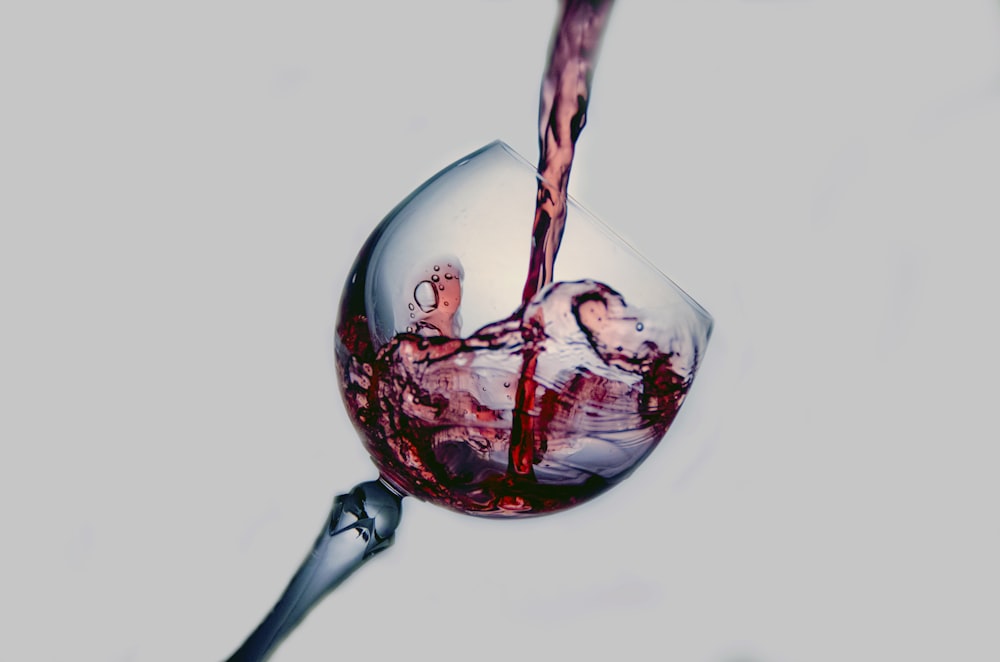Are you one of the many people who experience headaches after drinking wine? If so, you’re not alone. Wine-induced headaches are a common occurrence for many people, and they can be incredibly frustrating. The good news is that understanding the reasons behind these headaches can help you prevent and manage them in the future.
There are several factors that can contribute to wine-induced headaches, including sulfites, histamines, tannins, and alcohol content. By understanding how these elements affect your body, you can make more informed decisions about what types of wine to drink and how much to consume.
In this article, we’ll explore each of these factors in detail, as well as provide some tips for avoiding wine headaches altogether. So, pour yourself a glass of water and get ready to learn more about the science behind wine-induced headaches.
Table of Contents
Sulfites: What Are They and How Do They Contribute to Wine Headaches?
If you’re tired of feeling like your head is about to explode after a glass of vino, you might want to blame those pesky sulfites lurking in your glass.
Sulfites are a naturally occurring compound found in many fermented foods, including wine. They are commonly used as a preservative to prevent spoilage and extend the shelf life of the wine.
However, for some people, sulfites can trigger headaches, allergic reactions, and other unpleasant symptoms. While sulfites are an unavoidable part of the winemaking process, there are sulfite alternatives available for those who are particularly sensitive.
Winemakers can use natural preservatives such as ascorbic acid or citric acid, or opt for alternative bottling methods that don’t require the addition of sulfites. Additionally, sulfite testing methods have improved over the years, allowing for more accurate labeling of sulfite content on wine bottles.
So, if you’re someone who struggles with sulfite-induced headaches, look for wines with lower sulfite content or try sulfite-free options to avoid the discomfort altogether.
Now, let’s move on to the next culprit behind wine-induced headaches: histamines. How do they affect our bodies and wine-drinking experience?
Histamines: How Do They Affect Our Bodies and Wine-Drinking Experience?
You may be surprised to learn that histamines, which are found in many foods and drinks, can actually make your wine-drinking experience unpleasant.
Histamine intolerance is a condition in which the body is unable to break down histamines properly, leading to an allergic reaction.
When you drink wine, histamines are present in varying amounts, depending on the type of wine. Red wines, for example, tend to have higher levels of histamines than white wines.
Not only can histamines cause allergic reactions, but they can also contribute to wine-induced headaches.
Histamines are released by cells in the body in response to injury or infection, and they cause blood vessels to widen, leading to inflammation.
This inflammation can trigger a headache, especially in people who are sensitive to histamines.
If you suffer from wine headaches, it may be worth paying attention to the histamine content of the wines you drink.
Tannins: Are They the Culprit Behind Your Wine Headaches?
Understanding the effect of tannins on your body is crucial in determining the cause of your wine-related headaches. Tannins are naturally occurring compounds found in grape skins, seeds, and stems. They are also present in other foods like tea, nuts, and berries. Tannins give red wine its characteristic astringency, bitterness, and complexity. However, they can also trigger headaches in some people.
White wine also contains tannins, but in lower levels compared to red wine. Does the color of wine affect the tannin levels and headache risk? Not necessarily. Tannin levels vary depending on the grape variety, winemaking process, and aging time.
To better understand how tannins affect your body, here are some key points to keep in mind:
- Tannins bind to proteins in your saliva and make your mouth feel dry and puckered. This sensation can be uncomfortable for some people and may contribute to headaches.
- Tannins can cause blood vessels to constrict, reducing blood flow to your brain. This effect can trigger headaches in susceptible individuals.
- Tannins may increase histamine release in your body, leading to allergy-like symptoms such as headaches, nasal congestion, and skin flushing.
- Tannins may have a cumulative effect. If you consume a lot of tannin-rich foods and drinks in a short period, you may experience a more severe headache.
Now that you know more about tannins and their potential impact on your wine-drinking experience, let’s explore another factor that can contribute to wine-induced headaches: alcohol and dehydration.
Alcohol and Dehydration: The Role of Alcohol in Wine-Induced Headaches
Don’t let alcohol and dehydration ruin your wine experience – learn how they can contribute to those pesky headaches.
Alcohol consumption, even in moderate amounts, can lead to dehydration. When you drink wine, it’s essential to maintain your hydration levels as alcohol has a diuretic effect, meaning it increases urine production and can eventually lead to dehydration.
Dehydration can cause headaches, and when combined with alcohol consumption, it can lead to more severe wine-induced headaches. Therefore, it’s crucial to drink water alongside wine to avoid dehydration and prevent headaches.
Migraine triggers are often related to alcohol consumption, and wine can be a significant trigger for some people. Alcohol can cause the blood vessels to dilate, and for migraine sufferers, this can trigger a headache. Additionally, the dehydration caused by alcohol can also be a trigger for migraines.
Therefore, if you’re prone to migraines, it’s essential to be mindful of your alcohol consumption and hydration levels when drinking wine. By understanding the role of alcohol and dehydration in wine-induced headaches, you can take steps to prevent them and enjoy your wine experience to the fullest.
Tips for Avoiding Wine Headaches: Prevention and Management Techniques
If you’re looking to savor your wine without experiencing the pounding of a thousand drums, try implementing these techniques for preventing and managing headaches.
First, make sure to stay hydrated throughout the day, especially before and after drinking wine. Drinking plenty of water can help prevent dehydration, a common cause of headaches. Additionally, consider incorporating hydration techniques such as coconut water or electrolyte supplements to help replenish your body’s fluids.
Another effective method for avoiding wine-induced headaches is to pair your wine with the right foods. Certain foods can help reduce the likelihood of headaches by slowing down the absorption of alcohol in your bloodstream.
Some food pairing suggestions include cheese, nuts, olives, and crackers. These snacks are high in fat and protein, which can help slow down the absorption of alcohol and reduce the intensity of headaches.
Remember, prevention is key when it comes to wine-induced headaches, so make sure to take care of your body and pair your wine with the right foods to enjoy your wine without the pain.
Frequently Asked Questions
Can a person be allergic to specific types of wine?
Have you ever experienced a headache after drinking a glass of wine? It’s possible that you have a wine allergy.
Wine allergy symptoms can include headaches, nasal congestion, skin rash, and even difficulty breathing in severe cases.
However, it’s important to note that a wine allergy is not the same as a wine intolerance or sensitivity.
If you suspect you have a wine allergy, it’s best to avoid the specific type of wine that triggers your symptoms.
In some cases, over-the-counter antihistamines may provide relief, but it’s always best to consult with a healthcare professional before taking any medication for your wine allergy symptoms.
How do certain food combinations affect the likelihood of wine-induced headaches?
When it comes to food pairings and wine, it’s important to consider potential migraine triggers.
Certain foods, such as aged cheeses, cured meats, and chocolate, can increase the likelihood of a wine-induced headache.
On the other hand, pairing wine with foods that are high in magnesium, like leafy greens and almonds, can actually help prevent headaches.
It’s also important to stay hydrated and avoid drinking on an empty stomach, as both can exacerbate the effects of alcohol.
By being mindful of your food pairings and taking steps to prevent dehydration, you can enjoy your wine without the headache.
Do certain types of wine contain more sulfites than others?
When it comes to wine preservation, sulfites play a key role in preventing oxidation and spoiling. As a result, many winemakers add sulfites to their wine during the production process.
However, not all wines have the same sulfite levels. White wines tend to have higher sulfite levels than red wines, as do wines that are intended for aging. Additionally, certain grape varieties naturally contain more sulfites than others.
It’s worth noting, though, that sulfites are not the only factor that can contribute to wine-induced headaches. Other compounds, such as histamines and tannins, may also be involved. Regardless of the cause, if you’re prone to headaches after drinking wine, it’s worth experimenting with different types to see if you can find one that agrees with you better.
Can drinking wine too quickly contribute to headaches?
When you sip wine slowly, you allow your body to process the alcohol and other components in the drink at a comfortable pace.
However, drinking wine too quickly can lead to dehydration, which is a common trigger for headaches. Your body needs water to function properly, and when you drink alcohol too quickly, it can interfere with your body’s ability to regulate its water levels.
This can cause headaches that are not only uncomfortable but can also ruin your wine-drinking experience.
So, the next time you pour yourself a glass of wine, remember to take it slow and stay hydrated to avoid those pesky headaches.
Is it possible to develop a tolerance to wine-induced headaches over time?
If you’re someone who frequently experiences wine-induced headaches, you may be wondering if it’s possible to develop a tolerance to them over time.
The answer is yes, although the degree to which this occurs may vary from person to person. Some studies suggest that regular wine consumption can actually reduce the likelihood of headaches, potentially due to the development of a tolerance or other long-term effects.
However, it’s important to note that excessive alcohol consumption can still have negative health consequences, so moderation is key. If you’re looking to reduce your risk of wine-induced headaches, it may be helpful to pace yourself when drinking, stay hydrated, and pay attention to any triggers that seem to worsen your symptoms.
Conclusion
In conclusion, now that you understand the reasons behind wine-induced headaches, you can make informed decisions on how to prevent or manage them.
Whether it’s sulfites, histamines, tannins, alcohol, or dehydration, there are ways to minimize their impact on your wine-drinking experience.
To avoid sulfites, choose wines that are labeled ‘sulfite-free,’ ‘no sulfites added,’ or ‘organic.’ If you’re sensitive to histamines, opt for white wines or lower histamine reds like Pinot Noir.
To reduce the impact of tannins, try aerating your wine or opting for lighter-bodied wines. And of course, be sure to drink plenty of water to combat the effects of alcohol and dehydration.
By following these tips, you can savor your wine without the pesky headache that often follows. Cheers to a headache-free wine experience!







